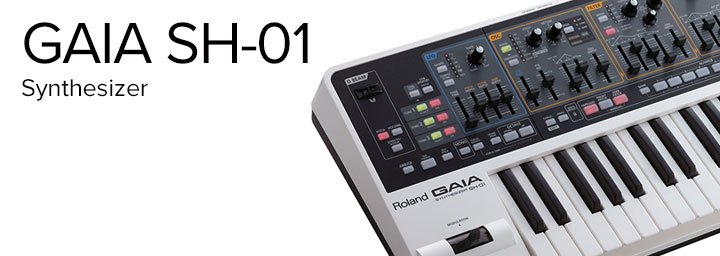Can You Play What You Hear?
As a professor who teaches music production at Berklee College of Music and Berklee Online, I have grown more and more sure that an understanding of synthesis is essential for keyboardists and producers alike.
Synthesizers are a constant presence in contemporary music, and even when we hear organic or acoustic sounds, they’re often performed within software that uses synthesizer parameters to control or modify them.
Most importantly, though, learning synthesis gives us a language for timbre and a way to understand sound.
Once I personally dove into synthesis, I started hearing differently. I gained a way to categorize sounds based on timbre, evolution, and modulation.
For example, the timbre of a clarinet has a characteristic “square wave” sound, the evolution of a violin sound may swell in with every note like a long envelope attack, and the pitch modulation in a singer’s vibrato increases as the note is sustained.
Before learning synthesis, I didn’t consider those kinds of specific details about the sounds, and I didn’t have a vocabulary to describe them. I would just think, “That sounds like a clarinet, violin, or voice.”
I see this same shift in my students as we explore synthesis; they develop a growing awareness of the details of sound, which makes the benefits of learning synthesis huge.
Contributed by Professor Loudon Stearns, Berklee College of Music
Hands-On: The Best Way to Explore and Understand Synthesis
After exploring many ways to present this information, it became obvious that a hands-on approach with supporting visuals is the fastest way for students to absorb this complex topic.
That’s why the Roland GAIA SH-01, along with its associated Sound Designer software and real-time Wave Viewer display, are great tools for my students and me.

I teach an ensemble at Berklee with 10 student performers, and the goal of the class is to explore the possibilities of electronic performance. We use numerous laptops and synthesizers that are all synchronized to create electronic dance music.
This classroom has walls that are literally covered in synthesizers (one of my favorite places in the world, by the way), and there are over 20 synths from all eras.
The students can take any synth they choose, but every semester the GAIA gets used more than any other synth in the room.

The class is an improvisation ensemble, and the students are required to adapt to any playing situation immediately. This is why the GAIA gets used so much!
It’s ideal because everything you need is right in front of you with a dedicated knob or slider. As a teacher, I love when students choose the GAIA, because I can walk up behind them and easily guide them to the perfect sound.
We don’t have to dive into menus—the whole patch is right there in front of us.
See How It Works
To assist other educators who are teaching synthesis or considering it, and also students who are studying synthesis, I created some free videos to make it easier.
In this six-part video series, I demonstrate my basic approach to teaching synthesis and some specifics of the GAIA that will help teachers teach this important topic and help students learn.
As you’ll see in the videos, there are a number of concepts that can be taught in the context of synthesis, which apply to everything from live performance on an acoustic instrument to studio music production.
Learning synthesis will make your students acute listeners, better musicians, and more creative producers.
Related Articles
A BEGINNER’S GUIDE TO SUBTRACTIVE SYNTHESIS
THE A-TO-Z OF SYNTHESIZER TERMS
AIRA MODULAR: WHAT IS A MODULAR SYNTHESIZER?
7 ESSENTIAL SYNTH TUTORIALS
ESSENTIAL SYNTH TUTORIALS: PART 2
SYNTHWAVE, SCI FI AND SOUND DESIGN




